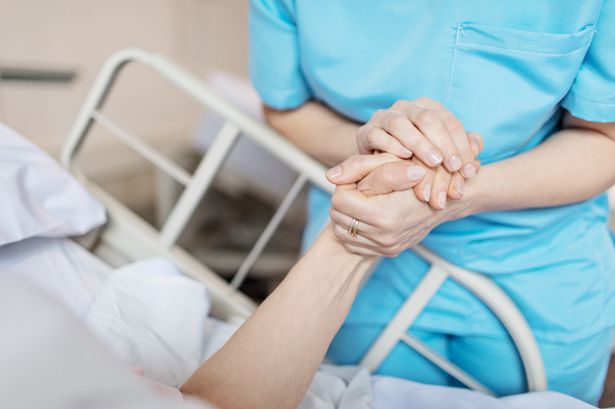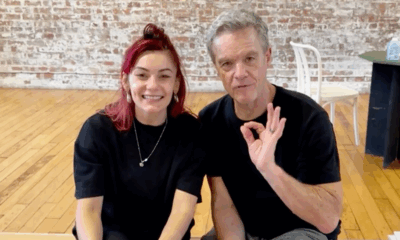Science
Hospice Nurse Reveals Comforting Insights into Dying Process

A hospice nurse has shared insights into the dying process, highlighting experiences that many individuals encounter in their final days. Julie McFadden, an end-of-life nurse and bestselling author from California, has garnered attention on TikTok, where she educates her 1.7 million followers about the nuances of death and dying. Her recent video emphasizes that there are comforting aspects to the transition that many people are unaware of.
In her post, McFadden explains that the human body is inherently equipped for the dying process. She notes, “The body is built to die. It has built-in mechanisms to help us die.” One such mechanism includes the brain turning off the hunger and thirst signals, which means that individuals nearing the end of life do not experience the discomfort of starvation or thirst. Instead, the body increases calcium levels, making individuals feel increasingly tired. This fatigue results in longer periods of sleep, alleviating the distress typically associated with not eating or drinking.
Moreover, McFadden highlights that the body can enter a state known as ketosis, which releases endorphins. These natural chemicals can provide a sense of well-being and pain relief, further easing the process of dying.
Comforting Visions in the Final Days
Alongside these physiological changes, McFadden addresses a phenomenon frequently reported by those in hospice care: the sight of deceased loved ones. She states, “Around a few weeks before death, someone will start seeing dead relatives, dead loved ones, old pets that have died.” These visions often bring comfort to the dying individual, offering reassurance during a challenging time.
Another healthcare professional, Carolyn Quach-Huynh from Crossroads Hospice & Palliative Care, corroborates McFadden’s observations. She notes that some patients report seeing unfamiliar spirits or crowded rooms filled with visitors from beyond. In addition to visual experiences, patients may dream of deceased relatives or encounter familiar scents, such as cigars or specific perfumes.
According to the NHS, it is common for individuals in their final days to exhibit restlessness or confusion. This behavior can stem from various factors, including physical discomfort or the progression of illnesses like dementia or cancer. In some cases, patients may drift in and out of sleep, leading to a distorted perception of reality. They may see or hear things that are not present, a phenomenon that can be unsettling for caregivers and family members.
If caregivers notice signs of confusion or restlessness in someone they are supporting, resources are available to provide assistance. The NHS offers guidance on managing these behaviors and ensuring comfort for both patients and their loved ones.
While the dying process can be daunting, insights from healthcare professionals like McFadden and Quach-Huynh offer a glimpse into the natural mechanisms at play during this profound stage of life. Understanding these experiences can help demystify death and provide solace to those facing the end.
-

 Health2 months ago
Health2 months agoNeurologist Warns Excessive Use of Supplements Can Harm Brain
-

 Health2 months ago
Health2 months agoFiona Phillips’ Husband Shares Heartfelt Update on Her Alzheimer’s Journey
-

 Science1 week ago
Science1 week agoBrian Cox Addresses Claims of Alien Probe in 3I/ATLAS Discovery
-

 Science5 days ago
Science5 days agoNASA Investigates Unusual Comet 3I/ATLAS; New Findings Emerge
-

 Science3 days ago
Science3 days agoScientists Examine 3I/ATLAS: Alien Artifact or Cosmic Oddity?
-

 Entertainment3 months ago
Entertainment3 months agoKerry Katona Discusses Future Baby Plans and Brian McFadden’s Wedding
-

 World2 months ago
World2 months agoCole Palmer’s Cryptic Message to Kobbie Mainoo Following Loan Talks
-

 Entertainment3 months ago
Entertainment3 months agoEmmerdale Faces Tension as Dylan and April’s Lives Hang in the Balance
-

 Entertainment3 months ago
Entertainment3 months agoLove Island Star Toni Laite’s Mother Expresses Disappointment Over Coupling Decision
-

 Entertainment2 months ago
Entertainment2 months agoMajor Cast Changes at Coronation Street: Exits and Returns in 2025
-

 World2 months ago
World2 months agoCoronation Street’s Asha Alahan Faces Heartbreaking Assault
-

 Entertainment2 weeks ago
Entertainment2 weeks agoStefan Dennis and Dianne Buswell Share Health Update on Strictly Come Dancing









